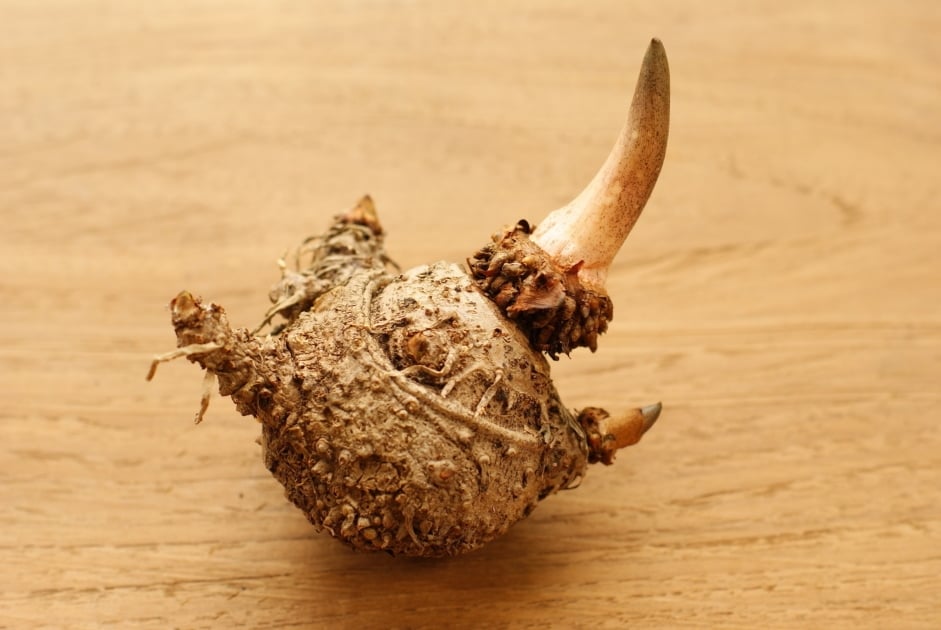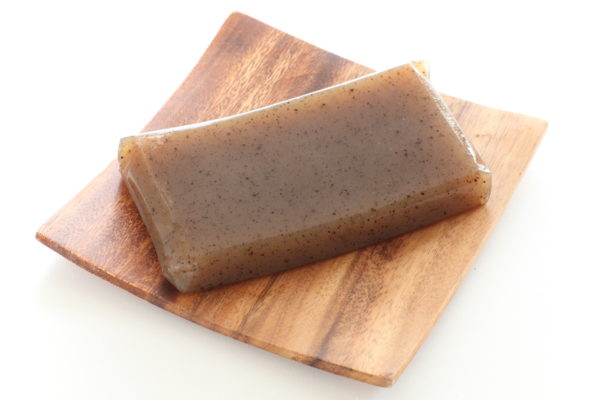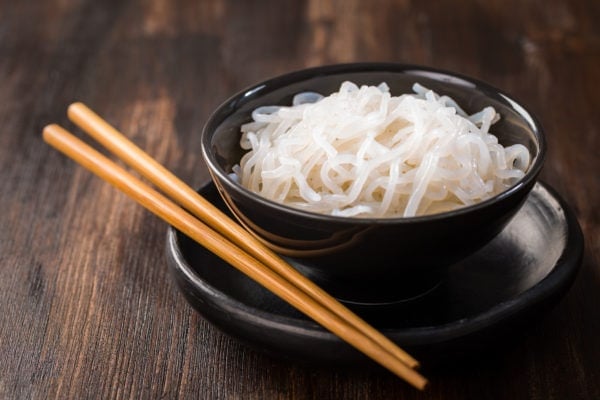What the Heck is Devil’s Tongue?
Find out more about this exotic root with a sinister name!

People seem to enjoy naming foods after the devil. There’s devil’s food cake, deviled eggs, devilled ham, pasta fra diavolo (Italian for “brother devil”) … But would you eat something called devil’s tongue?
What Is Devil’s Tongue?
This demonic moniker (“demoniker?”) can actually refer to either of two rarely eaten vegetables: Dominican red savina peppers, which, as their nickname implies, are hot as, erm, heck, and konjac, an Asian herb most popular in Japan.
Konjac, pronounced like “Cognac,” is known by any of several names, including konnyaku, voodoo lily, snake palm, elephant yam, and of course, devil’s tongue. It takes its sinister nickname from the dark reddish-purple spadix that juts from the center of the plant, much like a pointy, lurid tongue.
In Asia, the corm, or bulb, of the plant, is a popular ingredient in many dishes. While the inside resembles a potato, the exterior looks more like a dragon’s claw. It is traditionally pulverized into a flour that can be made a kind of patty popularly known as yam cakes. Konnyaku cakes come in blocks, similar to tofu, and are eaten in much the same way. They don’t have much flavor of their own, rather taking on the flavor of any sauces used on them, but are enjoyed for their firm, spring texture. These patties can be filleted and eaten as sashimi, formed into gelatinous balls, or pressed into noodles, called shirataki.
Konjac is slightly savory, very low in calories, but high in fiber, so it is filling and prized by those who are watching their weight or cholesterol levels. It is also a good source of calcium, protein, amino acids, phosphorus, zinc, and glucomannan, a molecular compound that has been shown to absorb cholesterol and bile acid, reduce blood pressure, and promote cardiovascular health.
Both konnyaku cakes and shirataki noodles can be found at most Asian grocers, or in the international section of some grocery stores.
Here are a couple of recipes to give your tongue a taste of this “devil”:
Konnyaku Sashimi

- 1 konnyaku cake, sliced
- 4 asparagus, sliced lengthwise Nori seaweed
Dressing:
- 1 tbs vinegar
- 1/2 tbs soy sauce
- 1/2 tsp cane sugar
- 1/2 tsp miso
- 1/2 tbs sesame oil
- 1 tbs ginger, finely chopped
- 1 tbs spring onion, finely chopped
Directions:
Combine all dressing ingredients into a small bowl and mix well. Rinse konnyaku with lemon juice. Place sliced asparagus on a plate with konnyaku slices and seaweed on top. Roll the seaweed and asparagus with konnyaku and dip it in the sauce.
Spicy Shirataki Stir-Fry
- 4 tablespoons tamari
- 2 1/2 tablespoons lime juice
- 1 tablespoon light brown sugar
- 2 teaspoons Sriracha sauce
- 1 tablespoon olive oil
- 2 tablespoons chopped jalapeño chile
- 3 cloves garlic, minced
- 1 medium onion, sliced
- 1 red bell pepper, sliced
- 1 yellow bell pepper, sliced
- 2 8-oz. packages of shirataki noodles, prepared according to package directions
- 1/2 cup fresh basil leaves, torn
Directions
In a mixing bowl, whisk together tamari, lime juice, brown sugar, and Sriracha and set aside. Heat olive oil in a wok over medium-high heat. Add jalapeño and garlic, and cook for about a minute. Add onion and bell peppers, and stir-fry for 5 minutes. Add tamari mixture and shirataki, and simmer 3 to 5 minutes. Toss with basil and serve.

Jaime McLeod
Jaime McLeod is a longtime journalist who has written for a wide variety of newspapers, magazines, and websites, including MTV.com. She enjoys the outdoors, growing and eating organic food, and is interested in all aspects of natural wellness.








looks delicious. cant wait to make yam cakes!
Having pulled tongue with El Diablo’s sisters many times under many moons, i must say,,,,,,,spicy,tangy,drippng with honey and a small flame to remind me what not to do next. i thank yall for this opportunity. jk
just saying, love reading this stuff and boy, they do their homework!!! awesome…
Demoniker? Nice word 🙂 I love the whole “What the heck is…” series!
That looks like something left in the barn by some animal and has taken on a life of it own. Don’t think it will ever grace my table in Kentucky. 🙂
Speaking of the Devil, I wonder if you have ever heard or seen one called “Devil Claw”?
I grew up in Oklahoma and had many of them grab you as you walked threw the fields, pasture and no telling where. They are a weed I think any way they come off a plant, and sorta like hand of claws. Now they can put a hurt on you. I have not seen one in many a year, and now of course here in Florida they are not heard of.
I use to have a couple but they have disappeared during the years, misplaced in the junk I guess. I did try to start a seed in a planter here but had no luck. Thanks for the memory. Norma